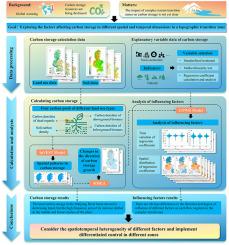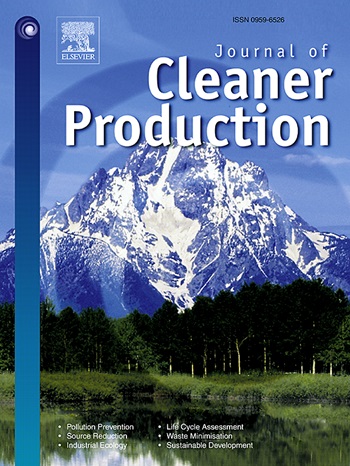高原-平原过渡带对碳储量有何影响?来自中国岷江流域的证据
IF 9.7
1区 环境科学与生态学
Q1 ENGINEERING, ENVIRONMENTAL
引用次数: 0
摘要
地形过渡带对全球碳储量至关重要,对气候变化敏感,在实现全球碳中和目标方面发挥着关键作用。然而,以往的研究并没有从宏观的综合角度充分解决这些带的特征。为了填补这一空白,本研究考察了岷江流域(MRB),该流域是典型的高原-平原过渡带,将其划分为上游、中游和下游三个区域。基于2000 - 2020年土地利用和土壤属性数据估算了碳密度值,并利用生态系统服务与权衡综合评价模型和标准差椭圆分析分析了碳储量的时空分布和变化。选取流域52个区县的16项自然经济指标,构建时空加权回归模型,探讨影响因素在流域内的时空异质性。结果表明:(1)2000 - 2020年,中游流域总碳储量减少了5.563×106 t,其中中游地区碳储量减少的83.93%。(2)影响碳储量的主要因子为夜间光照和相对湿度,平均影响强度分别为-0.181和0.111。(3)影响因素具有显著的时空异质性;上游地区受NL影响最大,回归系数最大,为-3.29。中下游地区的影响相对较弱,主要受第一产业年产值和土壤pH的正向影响,回归系数最大,分别为0.437和0.747。这些研究结果为评估MRB区域固碳能力提供了可靠的数据,并为复杂地形地区的生态保护和人类活动管理提供了理论依据。本文章由计算机程序翻译,如有差异,请以英文原文为准。

How is carbon storage in plateau–plain transition zone influenced? Evidence from Minjiang River Basin, China
Topographic transition zones are vital for global carbon storage and are sensitive to climate change, playing a key role in achieving global carbon neutrality goals. However, previous studies have not adequately addressed the characteristics of these zones from a comprehensive macroscopic perspective. To fill this gap, this study examines the Minjiang River Basin (MRB), which exemplifies a typical plateau–plain transition zone, dividing it into three areas: upstream, midstream, and downstream. Carbon density values were estimated based on land use and soil attribute data from 2000 to 2020, and the spatiotemporal distribution and changes in carbon storage were analyzed using the Integrated Valuation of Ecosystem Services and Trade-offs model along with Standard Deviation Ellipse Analysis. Sixteen natural economic indicators from 52 districts and counties were selected to construct a geographically and temporally weighted regression model, exploring the spatiotemporal heterogeneity of influencing factors across the basin. The results revealed the following: (1) From 2000 to 2020, total carbon storage in the MRB decreased by 5.563×106 t, with the midstream region accounting for 83.93% of this decline. (2) The dominant factors influencing carbon storage were nighttime light (NL) and relative humidity, with average influence intensities of -0.181 and 0.111, respectively. (3) Influencing factors exhibited significant spatiotemporal heterogeneity; the upstream area was most adversely affected by NL, with a maximum regression coefficient of -3.29. In contrast, the midstream and downstream areas experienced relatively weak influences, primarily from the positive effects of annual production value in the primary industry and soil pH, which had maximum regression coefficients of 0.437 and 0.747, respectively. These findings provide robust data for assessing regional carbon sequestration capacity in the MRB and offer a theoretical basis for conducting ecological protection and managing human activities in areas with complex terrain.
求助全文
通过发布文献求助,成功后即可免费获取论文全文。
去求助
来源期刊

Journal of Cleaner Production
环境科学-工程:环境
CiteScore
20.40
自引率
9.00%
发文量
4720
审稿时长
111 days
期刊介绍:
The Journal of Cleaner Production is an international, transdisciplinary journal that addresses and discusses theoretical and practical Cleaner Production, Environmental, and Sustainability issues. It aims to help societies become more sustainable by focusing on the concept of 'Cleaner Production', which aims at preventing waste production and increasing efficiencies in energy, water, resources, and human capital use. The journal serves as a platform for corporations, governments, education institutions, regions, and societies to engage in discussions and research related to Cleaner Production, environmental, and sustainability practices.
 求助内容:
求助内容: 应助结果提醒方式:
应助结果提醒方式:


